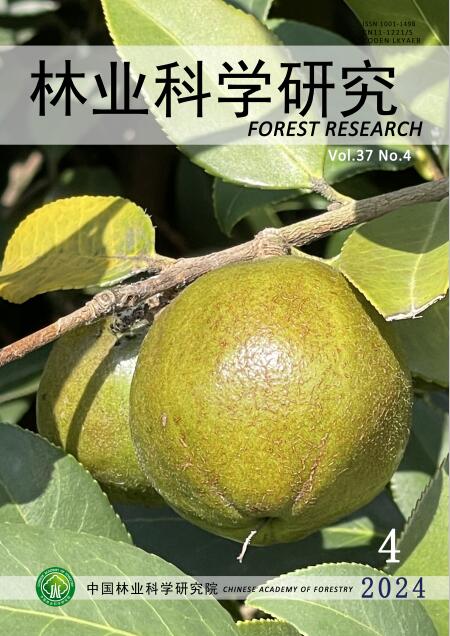美国德克萨斯州东部火炬松人工林与森林牧区树木生长的比较
Q4 Agricultural and Biological Sciences
引用次数: 2
摘要
土地所有者希望使潜在收入来源多样化,这导致对森林牧场的兴趣增加。这种集约化土地管理方案允许在同一土地基础上生产木材、牲畜和/或饲料。由于美国东南部西部海湾沿岸地区常见的火炬松(Pinus taeda)传统人工林系统,需要对树木生长进行比较,以证明使用森林牧场的合理性。本研究在德克萨斯州东部的一个单一地点,对火炬松的高度、直径和体积生长进行了评估。人工林样地单株树木直径和体积大于人工林样地;然而,种植地块每公顷产量更高。人工林的树木种植数量(1282棵/公顷)高于林场的树木种植数量(598棵/公顷)。在森林放牧中,场地资源集中在生产直径更大、锯材尺寸更大、理论上价值更高的树木。本文章由计算机程序翻译,如有差异,请以英文原文为准。
A Comparison of Tree Growth in Loblolly Pine (Pinus taeda) Plantations and Silvopasture Settings in East Texas
A desire by landowners to diversify potential income sources has resulted in an increased interest in silvopasture. This intensive land management option allows for the production of timber, livestock and/or forage on the same land base. With traditional plantation systems featuring loblolly pine (Pinus taeda) common in the western gulf coast region of the southeastern United States, comparisons of tree growth are needed to justify the use of silvopasture. This study evaluated the height, diameter and volume growth 13 years post-establishment of loblolly pine in both silvopasture and plantation spacings on a single site in east Texas. Individual trees in silvopasture plots had greater diameter and volume than those in plantation plots; however, plantation plots yielded greater volume per hectare. The greater volume per hectare was driven by the greater number of trees planted (1282 trees ha-1) in plantation plots than those planted (598 trees ha-1) in silvopasture. In silvopasture, site resources are concentrated on producing larger-diameter, sawtimber size, and theoretically, higher-value trees.
求助全文
通过发布文献求助,成功后即可免费获取论文全文。
去求助
来源期刊

林业科学研究
Environmental Science-Ecology
CiteScore
0.90
自引率
0.00%
发文量
4834
期刊介绍:
Forestry Research is a comprehensive academic journal of forestry science organized by the Chinese Academy of Forestry. The main task is to reflect the latest research results, academic papers and research reports, scientific and technological developments and information on forestry science mainly organized by the Chinese Academy of Forestry, to promote academic exchanges at home and abroad, to carry out academic discussions, to flourish forestry science, and to better serve China's forestry construction.
The main contents are: forest seeds, seedling afforestation, forest plants, forest genetic breeding, tree physiology and biochemistry, forest insects, resource insects, forest pathology, forest microorganisms, forest birds and animals, forest soil, forest ecology, forest management, forest manager, forestry remote sensing, forestry biotechnology and other new technologies, new methods, and to increase the development strategy of forestry, the trend of development of disciplines, technology policies and strategies, etc., and to increase the forestry development strategy, the trend of development of disciplines, technology policies and strategies. It is suitable for scientists and technicians of forestry and related disciplines, teachers and students of colleges and universities, leaders and managers, and grassroots forestry workers.
 求助内容:
求助内容: 应助结果提醒方式:
应助结果提醒方式:


